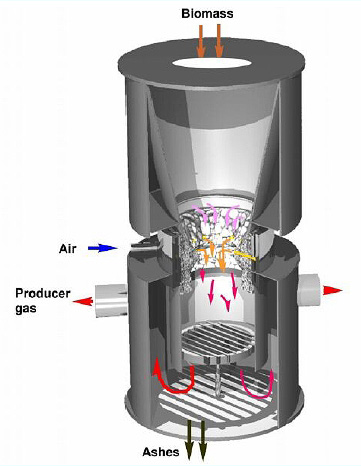Biomass gasification is an endothermic thermal conversion process whereby a solid fuel is converted into a combustible gas.

The product gas consists of carbon monoxide, carbon dioxide, hydrogen, methane, trace amounts of higher hydrocarbons (ethane), water, nitrogen (with air as oxidant) and various contaminants, such as small char particles, ash, tars, higher hydrocarbons and oils.

Source: Gasifier schematic by NRC
The Syngas produced by gasification is Incomplete Combustion and as such syngas can be much dirtier than the flue gas from complete combustion, I.e. depending on the process the hydrocarbon, tar, ammonia etc levels are very high.
Gasification allows for emissions reduction in that it is possible to clean the syngas to remove emission causing agents. The syngas combustion can then be done in a very clean and efficient manner.
Tars formed in the gasification process can readily condense on cool components downstream from the gasifier, resulting in plugging and fouling of pipes, tubes, and other equipment.
- Tars can severely engine operation (fouling, lubrication) and must be eliminated.
- Simple scrubbing approach has repeatedly failed to demonstrate long-term reliability and creates serious environmental problems because of large quantities of tarry water produced.
- Catalytic reforming followed by scrubbing is a preferred option.
- Tar formation can be reduced by separating the drying, devolatilization, gasification and combustion reaction steps (e.g. multi-stage gasifiers –

Source: GEK Experimeter's Kit
No comments:
Post a Comment